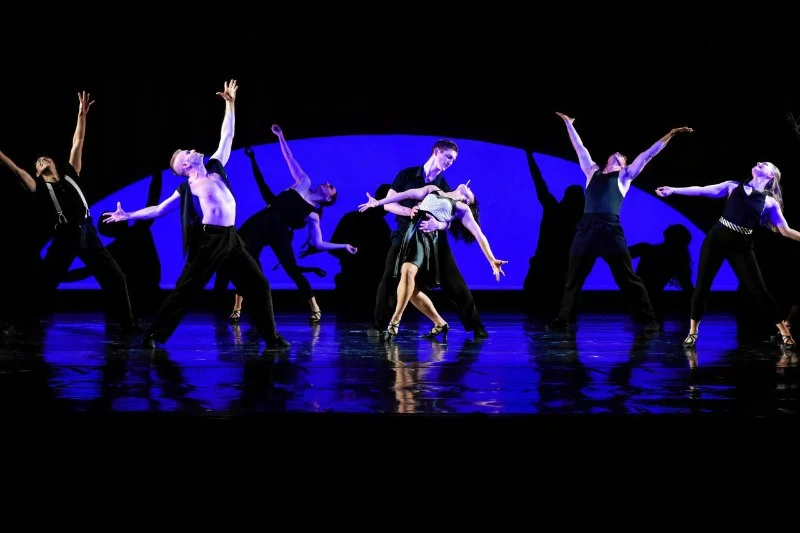
The History of Jazz Dance You Can Learn at Home
- 1. What is Jazz Dance?
- 2. The Origins of Jazz Dance
- 3. Key Influences on Jazz Dance
- 4. The Evolution of Jazz Dance Styles
- 5. Learning Jazz Dance at Home
- 6. The Benefits of Jazz Dance
Jazz dance is a dynamic and expressive dance style that has evolved over the decades, drawing from a variety of cultural influences. Whether you're looking to explore this art form for fun, fitness, or to deepen your dance skills, learning jazz dance at home has never been more accessible. In this article, we will dive into the history of jazz dance, its evolution, and how you can start learning jazz dance from the comfort of your own home.
1. What is Jazz Dance?
Jazz dance is a high-energy dance style that combines elements of African dance, ballet, and modern dance. It is known for its sharp movements, improvisational style, and rhythmic coordination. Often performed to upbeat jazz music, it emphasizes personal expression and creativity. Over the years, jazz dance has influenced and been influenced by a wide range of popular dance forms, including musical theater, hip hop, and contemporary dance.
The core of jazz dance lies in its flexibility, improvisation, and vibrant expression. Dancers are encouraged to interpret music with their own unique style, making it a dance form that continues to evolve as new trends emerge.
2. The Origins of Jazz Dance
The roots of jazz dance can be traced back to African-American communities in the early 20th century. It evolved as a form of social dance that was influenced by African rhythms, spirituals, and folk dances. Early jazz dance was primarily a reflection of the energy and creativity of the African-American experience, especially within the context of social gatherings and entertainment.
2.1 African Dance Influences
African dance traditions, with their emphasis on complex rhythms, body isolations, and percussive movements, played a major role in shaping early jazz dance. This influence is particularly evident in the energetic footwork and expressive movements that characterize jazz dance today.
2.2 The Birth of Jazz Dance in the United States
By the early 1900s, jazz music and jazz dance had firmly established themselves in the United States. The advent of jazz clubs and theaters in cities like New York and Chicago created a platform for jazz dance to thrive, with dancers performing in shows and cabarets. Early jazz dance pioneers, like Katherine Dunham and Jack Cole, helped establish the dance style as an important form of entertainment.
3. Key Influences on Jazz Dance
Several key cultural and artistic movements have shaped the development of jazz dance over the years. Below are some of the most notable influences:
3.1 The Harlem Renaissance
In the 1920s, the Harlem Renaissance—a cultural movement that celebrated African-American art, music, and literature—had a profound impact on jazz dance. Dancers like Alvin Ailey and Martha Graham incorporated jazz dance into modern dance performances, creating a fusion of both styles.
3.2 Broadway and Hollywood
The 1930s and 1940s saw the rise of jazz dance in Broadway shows and Hollywood musicals. Choreographers like Jerome Robbins and Bob Fosse brought jazz dance to the big stage, blending it with theatrical storytelling to create iconic performances in musicals such as "West Side Story" and "Chicago." The highly stylized jazz dance seen in these productions influenced the way jazz dance was performed and taught.
4. The Evolution of Jazz Dance Styles
As jazz dance grew in popularity, different styles and techniques emerged. Some of the key styles of jazz dance include:
4.1 Traditional Jazz Dance
Traditional jazz dance is the foundation of modern jazz dance. It incorporates lively, syncopated rhythms and intricate footwork. Popular in the early 20th century, this style is often performed to swing, big band, or Dixieland jazz music.
4.2 Broadway Jazz
Broadway jazz evolved from traditional jazz dance, incorporating more theatrical and expressive elements. This style is often seen in musical theater performances, characterized by sharp, dramatic movements and a focus on storytelling through dance.
4.3 Contemporary Jazz
Contemporary jazz dance blends elements of modern dance, ballet, and hip-hop. This style is more fluid and expressive, often focusing on body isolations and intricate movements. It’s a popular style in today’s dance studios and competitions and is frequently seen in music videos and on television shows.
5. Learning Jazz Dance at Home
Learning jazz dance at home is a fantastic way to improve your fitness, enhance your coordination, and express yourself through movement. With the rise of online dance tutorials, it’s easier than ever to get started. Here are some tips for learning jazz dance at home:
5.1 Online Dance Classes
Many dance schools, including online platforms, offer jazz dance tutorials that cater to all skill levels. These lessons typically focus on learning basic movements and techniques, such as isolations, jumps, and turns. Whether you're a beginner or advanced dancer, you can find courses that match your level.
5.2 Practice with Jazz Dance Videos
There are plenty of jazz dance performances and practice videos available online, which can serve as great inspiration and learning tools. Watching professional dancers and choreographers can help you understand the nuances of jazz dance and give you ideas for your own practice.
5.3 Consistent Practice
To master jazz dance, consistency is key. Set aside time each day or week to practice your moves and focus on building strength, flexibility, and rhythm. Remember, improving your technique takes time, so be patient with yourself.
6. The Benefits of Jazz Dance
Jazz dance is more than just a fun activity; it offers numerous physical and mental benefits, including:
6.1 Improved Cardiovascular Health
Jazz dance is an excellent cardiovascular workout. The quick movements and footwork raise your heart rate, helping to improve heart health and stamina over time.
6.2 Increased Flexibility and Strength
The dynamic movements involved in jazz dance help improve flexibility, balance, and coordination. Regular practice also builds muscle strength, particularly in the core, legs, and arms.
6.3 Mental Benefits
In addition to physical benefits, jazz dance can have a positive impact on mental health. The creative expression involved in dance helps reduce stress and boost overall mood, while learning new moves challenges the brain and improves memory.
If you're ready to dive deeper into jazz dance, check out American Dance Academy for the best dance classes, resources, and tools to help you get started and perfect your technique at home.
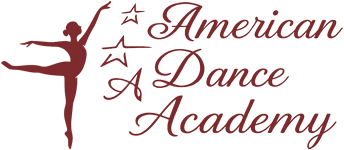
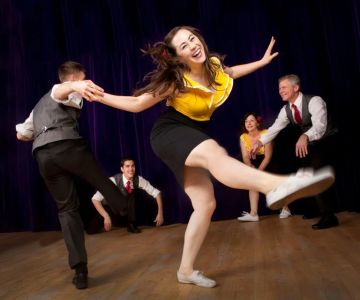
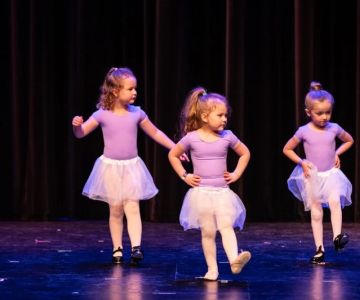
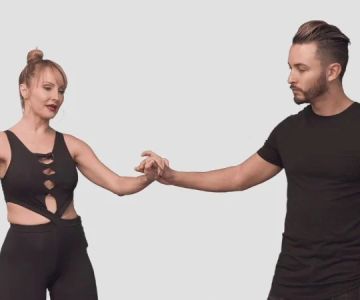

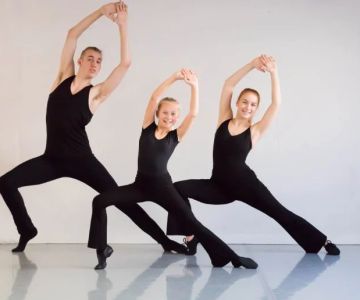
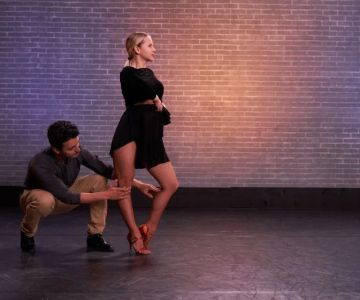
 Time To Dance Professional Studio4.0 (16 reviews)
Time To Dance Professional Studio4.0 (16 reviews)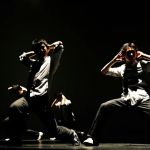 Inland Empire Dance Center4.0 (6 reviews)
Inland Empire Dance Center4.0 (6 reviews) Outpour Dance Company4.0 (16 reviews)
Outpour Dance Company4.0 (16 reviews) Amys Studio of Performing Arts5.0 (19 reviews)
Amys Studio of Performing Arts5.0 (19 reviews) Planet Dance4.0 (32 reviews)
Planet Dance4.0 (32 reviews)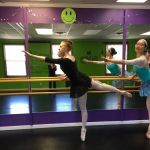 Yoga & Ballet Alternatives0.0 (0 reviews)
Yoga & Ballet Alternatives0.0 (0 reviews) De Danaan School of Irish Dance: Excellence in Irish Dance Training
De Danaan School of Irish Dance: Excellence in Irish Dance Training A Wonderful Life High School Dance Scene: Why It Still Dazzles
A Wonderful Life High School Dance Scene: Why It Still Dazzles What Is Homecoming Dance in High School? Everything Students Should Know
What Is Homecoming Dance in High School? Everything Students Should Know Did the Dance Moms Girls Go to the Same School? Behind the Scenes of Their Education
Did the Dance Moms Girls Go to the Same School? Behind the Scenes of Their Education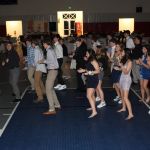 What to Wear to High School Homecoming Dance: A Complete Style Guide
What to Wear to High School Homecoming Dance: A Complete Style Guide Tap Dance for College Students: Learn Basic to Advanced Steps
Tap Dance for College Students: Learn Basic to Advanced Steps